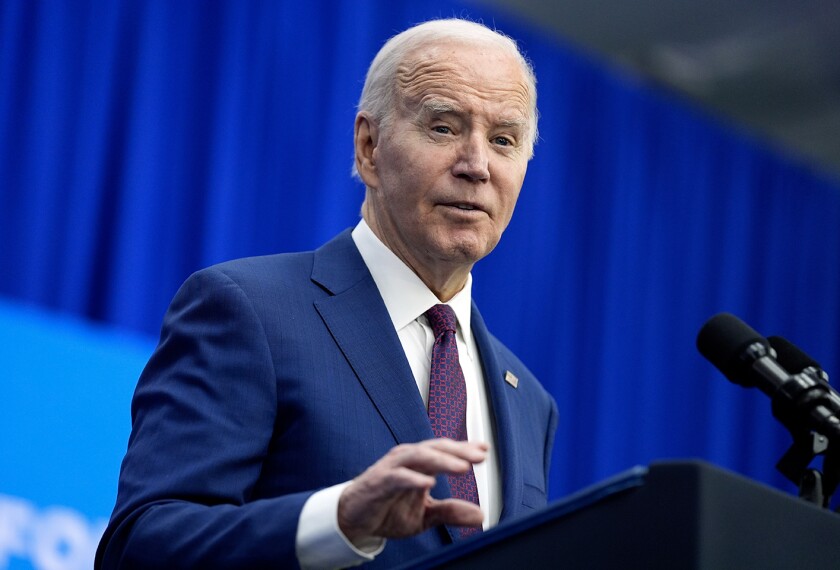COLUMBUS, Ohio (AP) — Ohioans would see significant cuts in mental health and drug treatment programs and face an increase in college tuition if Congress passes a stimulus package with reduced aid to struggling states, Gov. Ted Strickland’s budget director warned state lawmakers Tuesday.
Strickland’s two-year, $55 billion budget plan relies on $3.4 billion in federal money to help fill a $7 billion deficit. The $838 billion version of President Barack Obama’s economic recovery plan that passed the U.S. Senate on Tuesday doesn’t include $25 billion that the U.S. House had set aside for states to spend on a variety of programs.
If the U.S. House is unable to restore the funding, Ohio would need to trim between $900 million and $1 billion from its budget proposal, Budget Director Pari Sabety said.
As a result, 50,000 fewer people would get mental health treatment, 33,000 Ohioans wouldn’t receive drug and alcohol addiction services, more than 40 percent of Ohio students would have to pay increased college tuition costs, and medium-sized correctional facilities would be closed, she said.
“We will be looking at real impacts of cuts in services to Ohioans every day,” Sabety told members of the Ohio House Finance Committee, who got their first chance to dissect the administration’s budget plan since it was released last week.
Strickland, a former congressman, traveled to Washington Monday to appeal to Ohio’s congressional delegation to restore the funding when the bill returns to the U.S. House. The Democrat said he is also speaking daily with fellow governors to coordinate efforts to see that the states’ position is heard.
The Senate cuts “will do great harm, will deprive people of needed services, will result in job loss, and that is simply contrary to the purpose of a stimulus bill,” Strickland said.
Some states have put their budget plans on hold while federal lawmakers work out the Obama recovery plan. Other states have crafted budgets that don’t rely on federal stimulus money.
Ohio, however, is moving forward with a budget plan based on stimulus money despite the uncertainty in Washington.
Republicans in Ohio have criticized Strickland for relying on one-time federal money, fearing it would lead to tax hikes in future years to maintain services.
Sabety defended the plan to state lawmakers, saying the point of stimulus money is to give states something to spend quickly.
“State government is an entity, unlike many financial institutions, that actually is in the business of spending money and putting it into the marketplace so that people have money to buy groceries, they have money to stimulate our economy, they have the ability to boost our confidence,” Sabety said.
Economic growth models show that tax revenues will increase during an expected recovery — enough to sustain the level of state spending, she said.
Strickland’s budget, based on a version of the stimulus plan in the U.S. House, calls for using $810 million in federal aid for special education and low-income school districts, and $1.35 billion for primary, secondary and higher education.
The Ohio Education Association, the state’s largest teacher’s union, said stimulus cuts in the U.S. Senate would affect the jobs of tens of thousands of educators over the next several years, pare back course offerings, and all but eliminate extracurricular activities.
Meanwhile, a coalition of social services advocates calculated the trimmed back stimulus funding would prevent expansion of public health insurance to 36,000 Ohio children and result in cuts to food programs for 2 million hungry Ohioans.
Strickland said the states can be engines for economic recovery. Ohio, for example, spends 88 cents of every dollar in its budget on local programs that support sick children, those with mental health issues, drug addiction, and the elderly, he said.
“This battle is not over,” he said.
His office launched a Web site Tuesday, www.recovery.ohio, where Ohioans can apply for programs underwritten by stimulus dollars — such as Pell grants for college students, or unemployment compensation. In a release, Strickland said he believe the site will allow the state to act more quickly when the money becomes available.
Ohioans would see significant cuts in mental health and drug treatment programs and face an increase in college tuition if Congress passes a stimulus package with reduced aid to struggling states, Gov. Ted Strickland’s budget director warned state lawmakers Tuesday.
Strickland’s two-year, $55 billion budget plan relies on $3.4 billion in federal money to help fill a $7 billion deficit. The $838 billion version of President Barack Obama’s economic recovery plan that passed the U.S. Senate on Tuesday doesn’t include $25 billion that the U.S. House had set aside for states to spend on a variety of programs.
If the U.S. House is unable to restore the funding, Ohio would need to trim between $900 million and $1 billion from its budget proposal, Budget Director Pari Sabety said.
As a result, 50,000 fewer people would get mental health treatment, 33,000 Ohioans wouldn’t receive drug and alcohol addiction services, more than 40 percent of Ohio students would have to pay increased college tuition costs, and medium-sized correctional facilities would be closed, she said.
“We will be looking at real impacts of cuts in services to Ohioans every day,” Sabety told members of the Ohio House Finance Committee, who got their first chance to dissect the administration’s budget plan since it was released last week.
Strickland, a former congressman, traveled to Washington Monday to appeal to Ohio’s congressional delegation to restore the funding when the bill returns to the U.S. House. The Democrat said he is also speaking daily with fellow governors to coordinate efforts to see that the states’ position is heard. The Senate cuts “will do great harm, will deprive people of needed services, will result in job loss, and that is simply contrary to the purpose of a stimulus bill,” Strickland said.
Some states have put their budget plans on hold while federal lawmakers work out the Obama recovery plan. Other states have crafted budgets that don’t rely on federal stimulus money.
Ohio, however, is moving forward with a budget plan based on stimulus money despite the uncertainty in Washington.
Republicans in Ohio have criticized Strickland for relying on one-time federal money, fearing it would lead to tax hikes in future years to maintain services.
Sabety defended the plan to state lawmakers, saying the point of stimulus money is to give states something to spend quickly.
“State government is an entity, unlike many financial institutions, that actually is in the business of spending money and putting it into the marketplace so that people have money to buy groceries, they have money to stimulate our economy, they have the ability to boost our confidence,” Sabety said.
Economic growth models show that tax revenues will increase during an expected recovery — enough to sustain the level of state spending, she said.
Strickland’s budget, based on a version of the stimulus plan in the U.S. House, calls for using $810 million in federal aid for special education and low-income school districts, and $1.35 billion for primary, secondary and higher education.
The Ohio Education Association, the state’s largest teacher’s union, said stimulus cuts in the U.S. Senate would affect the jobs of tens of thousands of educators over the next several years, pare back course offerings, and all but eliminate extracurricular activities.
Meanwhile, a coalition of social services advocates calculated the trimmed back stimulus funding would prevent expansion of public health insurance to 36,000 Ohio children and result in cuts to food programs for 2 million hungry Ohioans.
Strickland said the states can be engines for economic recovery. Ohio, for example, spends 88 cents of every dollar in its budget on local programs that support sick children, those with mental health issues, drug addiction, and the elderly, he said.
His office launched a Web site Tuesday, www.recovery.ohio.gov, where Ohioans can apply for programs underwritten by stimulus dollars — such as Pell grants for college students, or unemployment compensation. In a release, Strickland said he believe the site will allow the state to act more quickly when the money becomes available.




